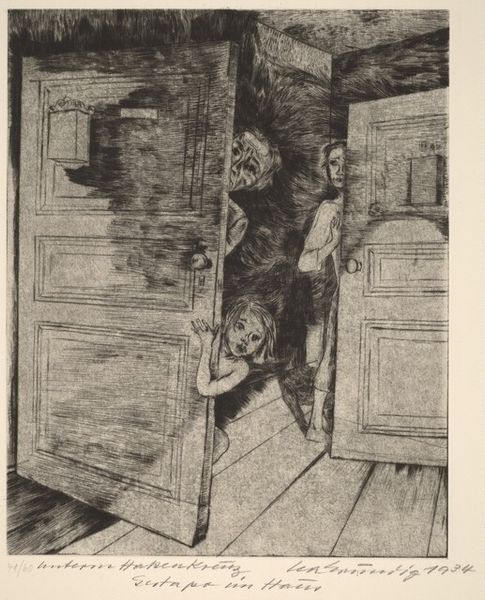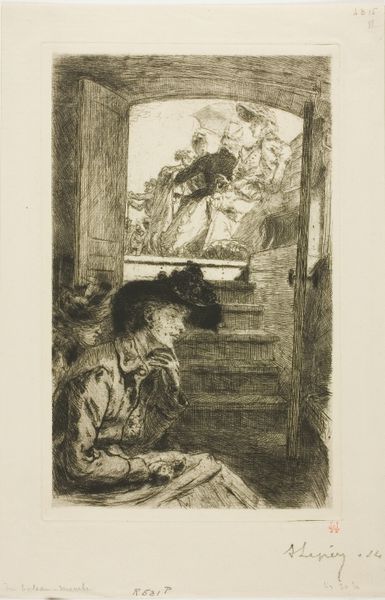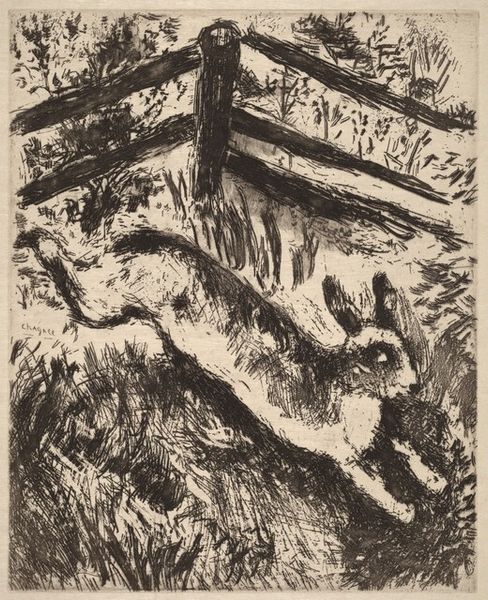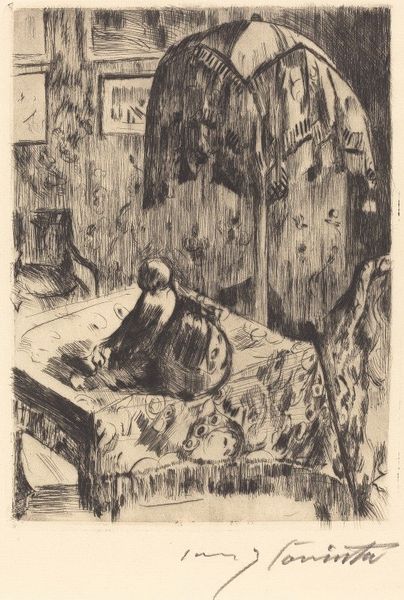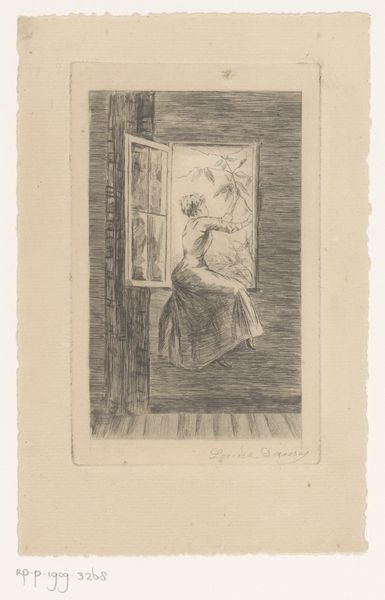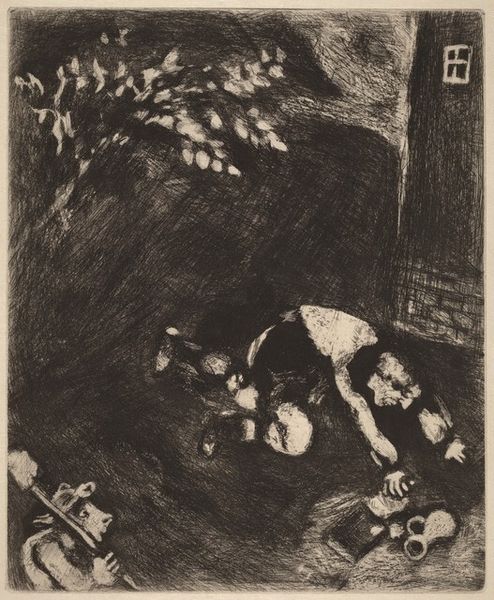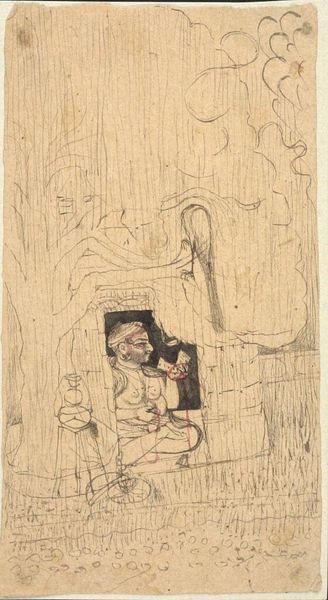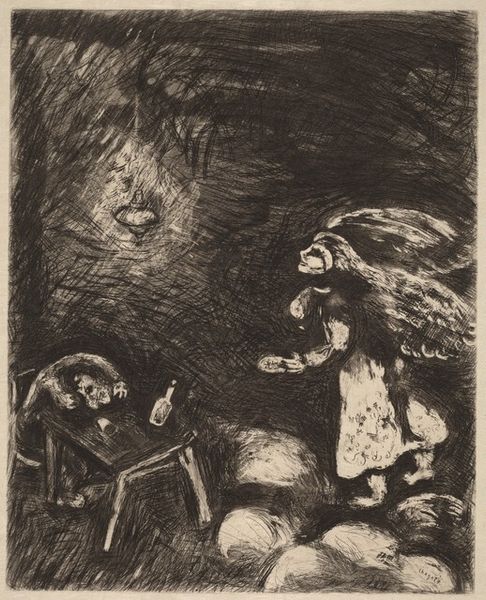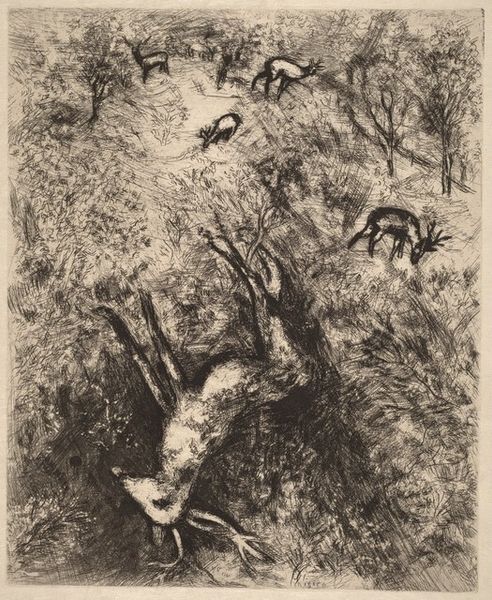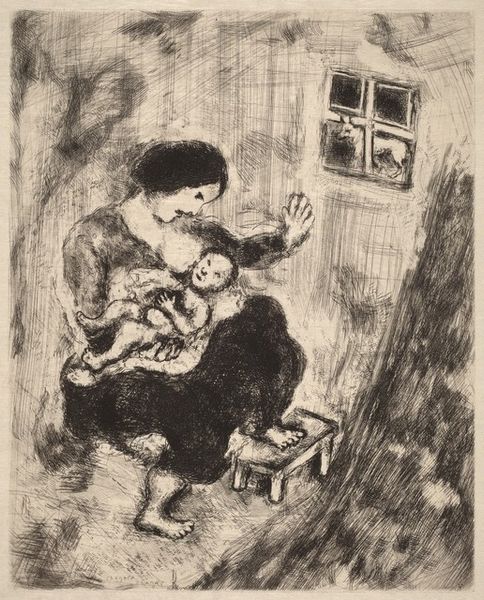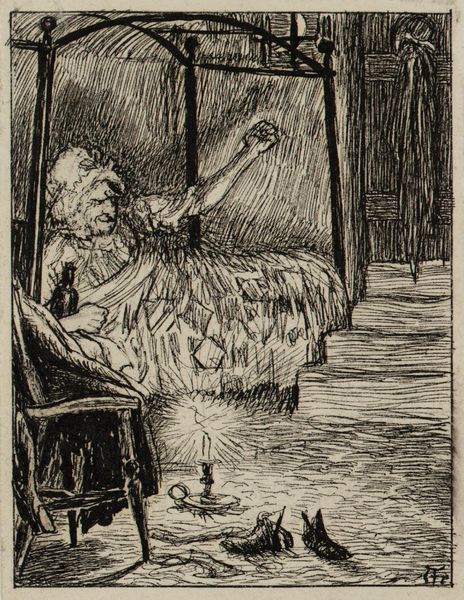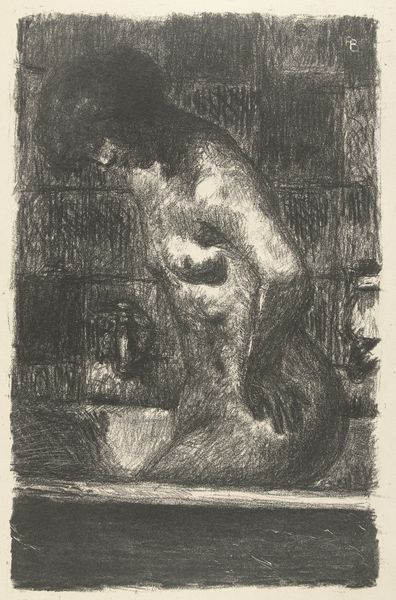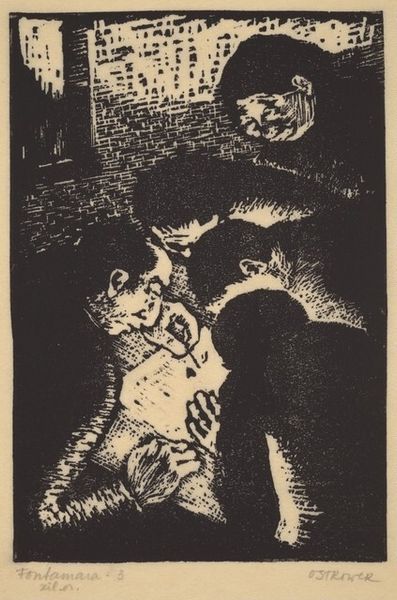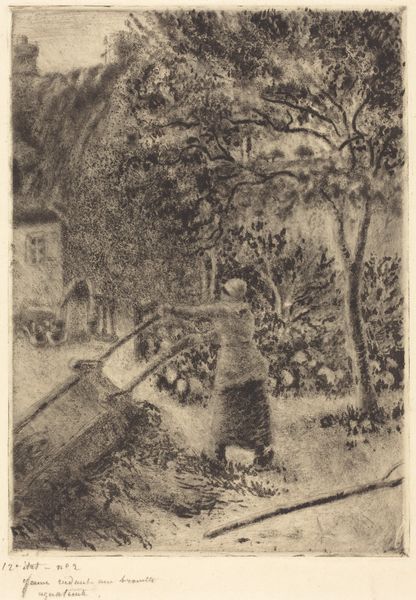
drawing, print, etching, engraving
#
drawing
#
narrative-art
# print
#
etching
#
landscape
#
figuration
#
engraving
#
modernism
Copyright: National Gallery of Art: CC0 1.0
Editor: Here we have Marc Chagall's "The Wolf, the Goat, and the Kid," made sometime between 1927 and 1930, using etching and engraving. There's a very raw and immediate feeling to it because of the stark black and white lines. How does this print speak to you? Curator: What I see here is Chagall using a classic fable to explore societal dynamics. Consider the wolf, rendered almost cartoonishly, attempting to infiltrate the domestic sphere of the goat and her kid. This piece isn't just about animals; it's a commentary on power, deception, and perhaps the anxieties of class division in the interwar period. Where do you see that narrative playing out visually? Editor: I guess the wolf seems almost desperate reaching for something just out of grasp, while the goat peers down from a safe distance. Do you think the rough lines contribute to that feeling of tension and unease? Curator: Absolutely. The hurried lines could mirror the unstable socio-political landscape of the time. Notice also how Chagall places the animals. He subverts traditional landscape art by positioning his figures to advance a socio-historical narrative, making commentary through placement and subject. Does this influence your opinion? Editor: Definitely! I didn't initially see it that way, but knowing the historical context really deepens my appreciation for Chagall's choices. I thought it was just a simple narrative illustration, but there's so much more going on beneath the surface. Curator: Exactly! That's the beauty of art. It can operate on multiple levels, reflecting and shaping our understanding of the world around us. Editor: I learned a lot looking at the placement and subject matter relative to societal issues of the time. Thanks for your expertise. Curator: My pleasure. Always look deeper. Art is never created in a vacuum.
Comments
No comments
Be the first to comment and join the conversation on the ultimate creative platform.
